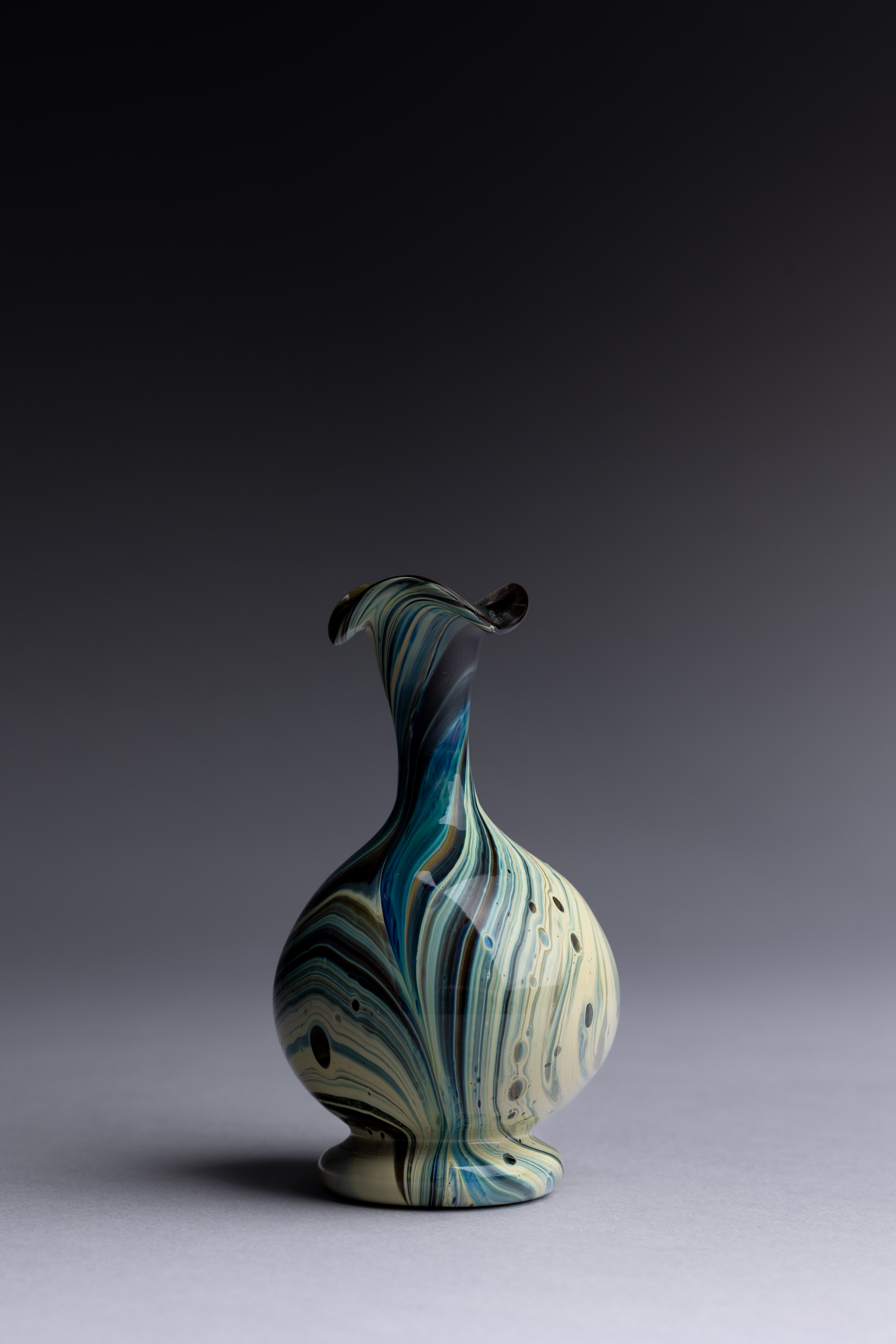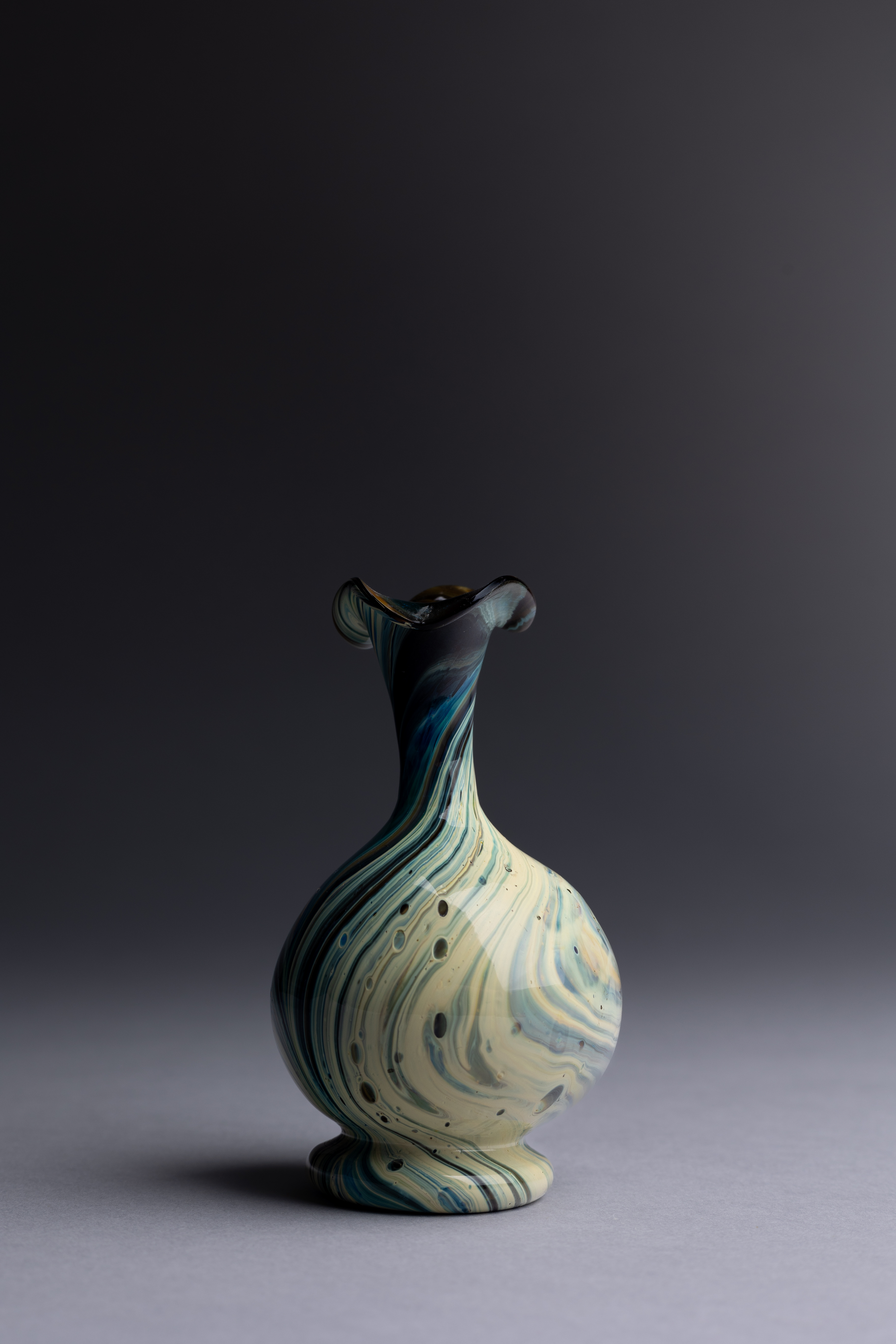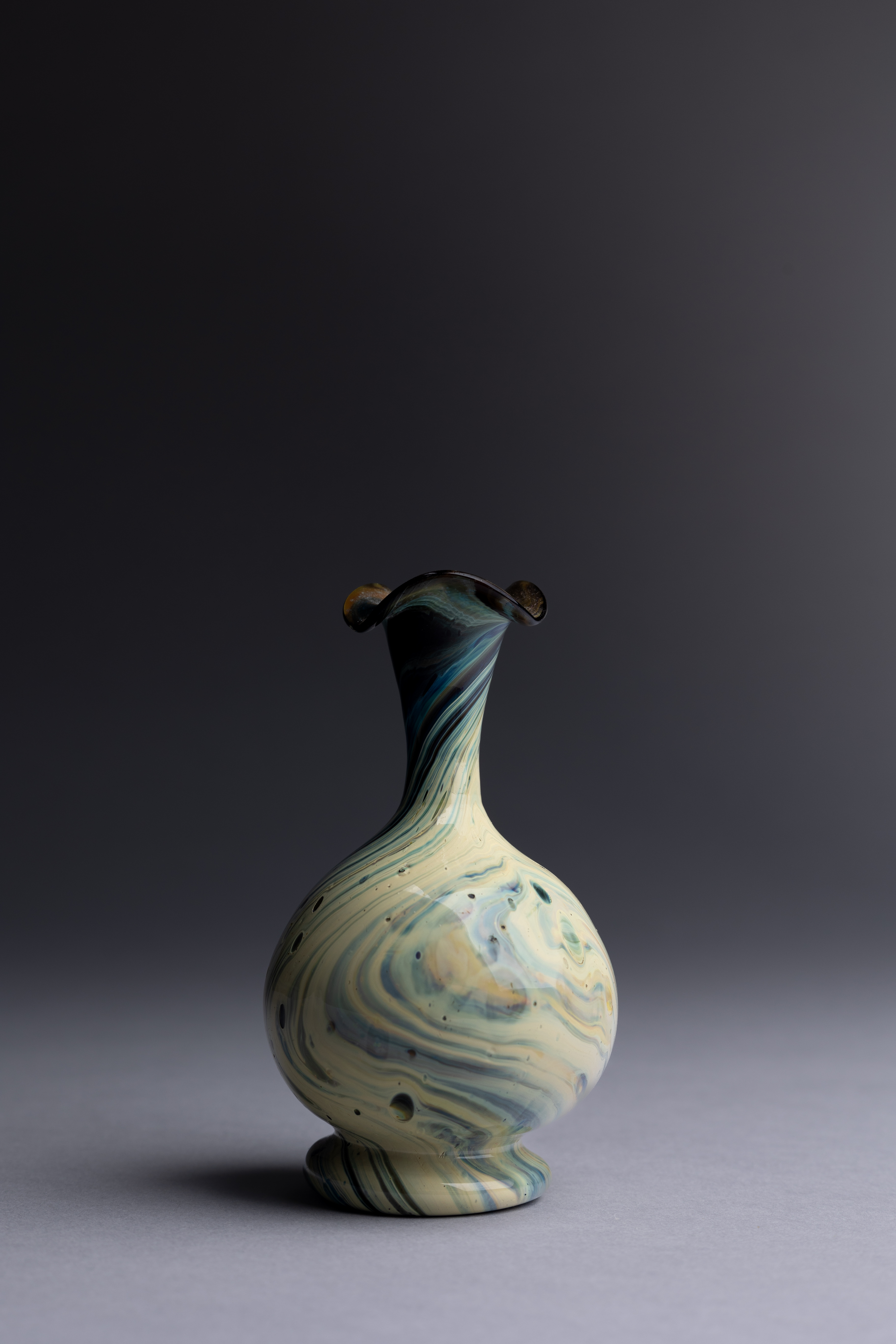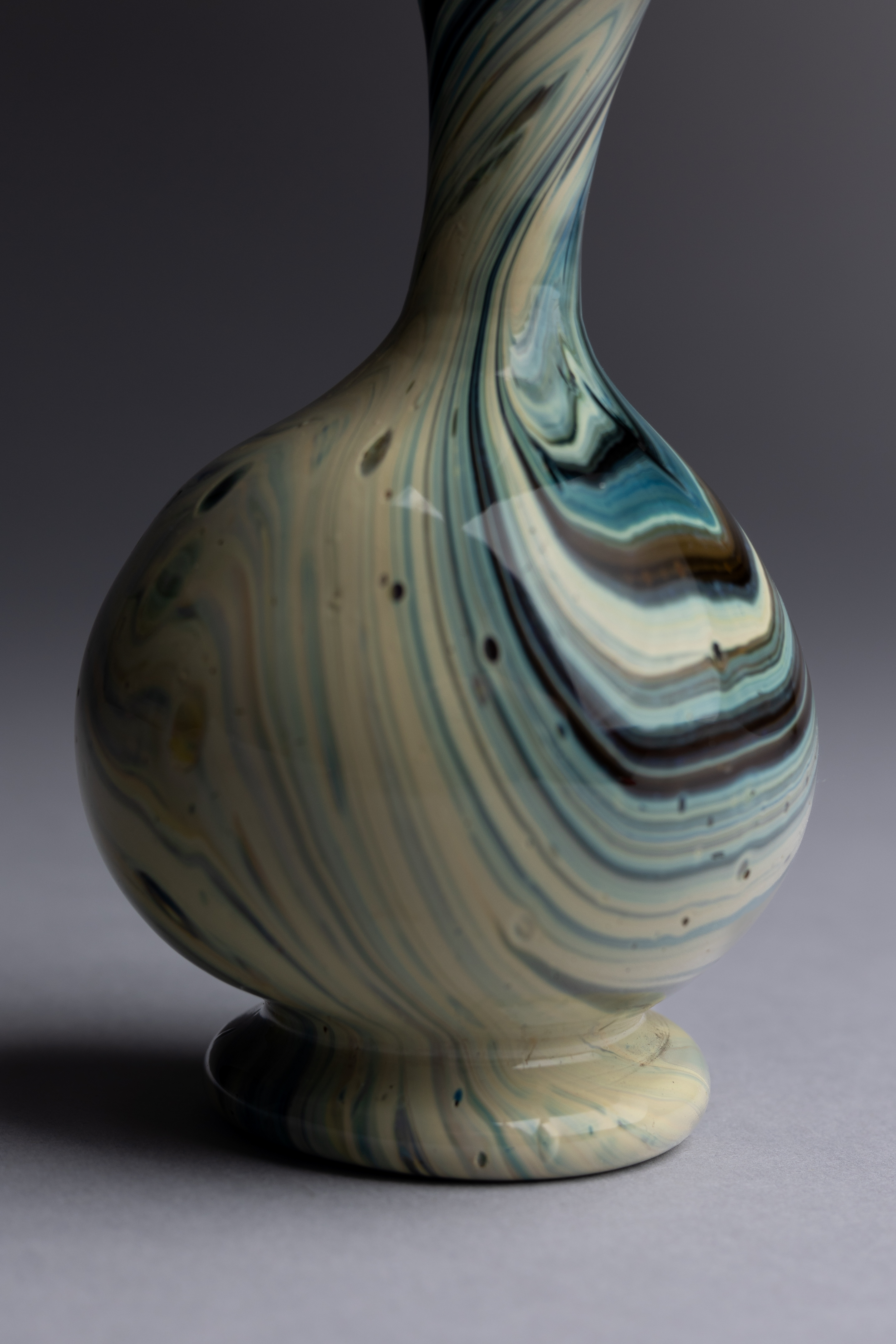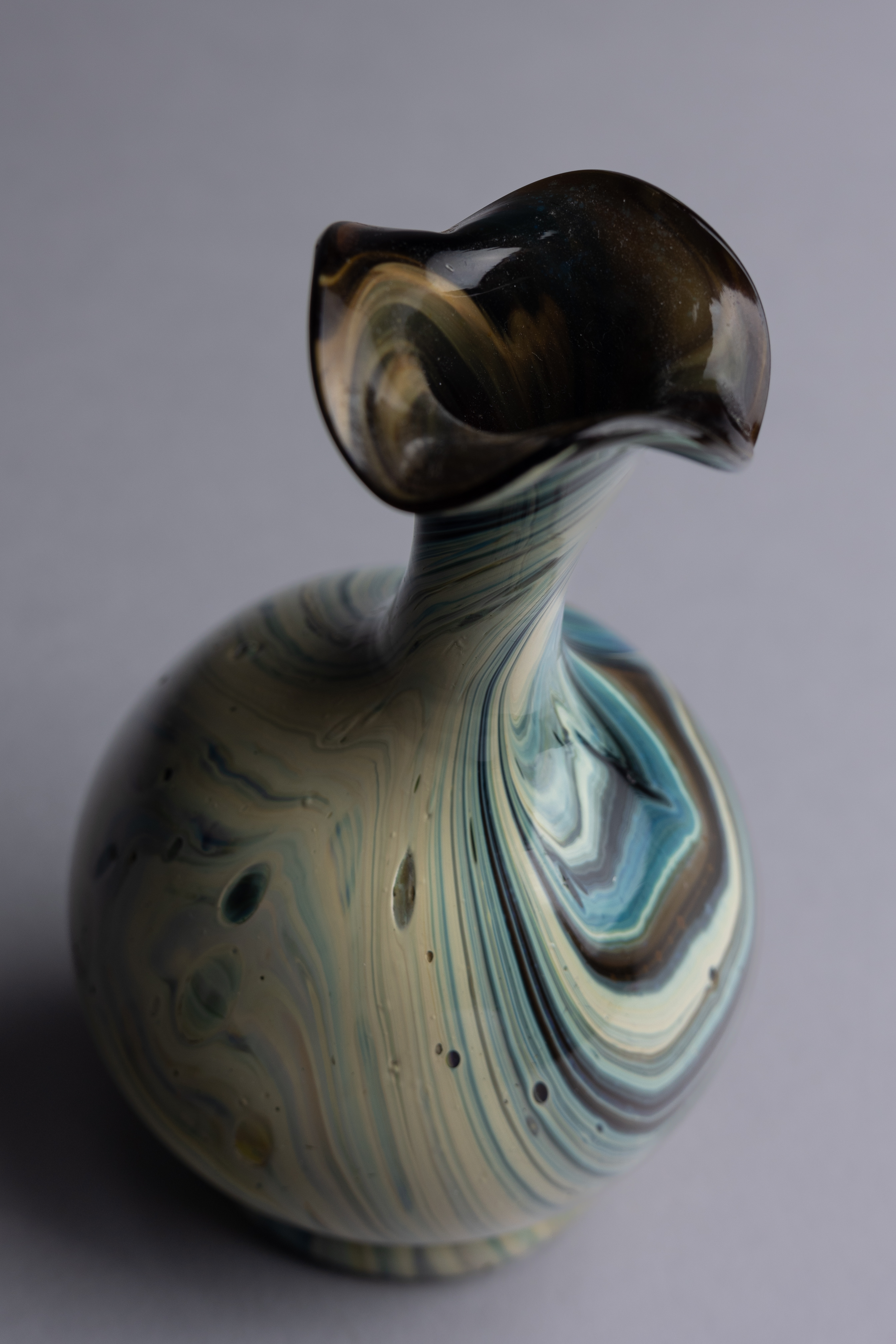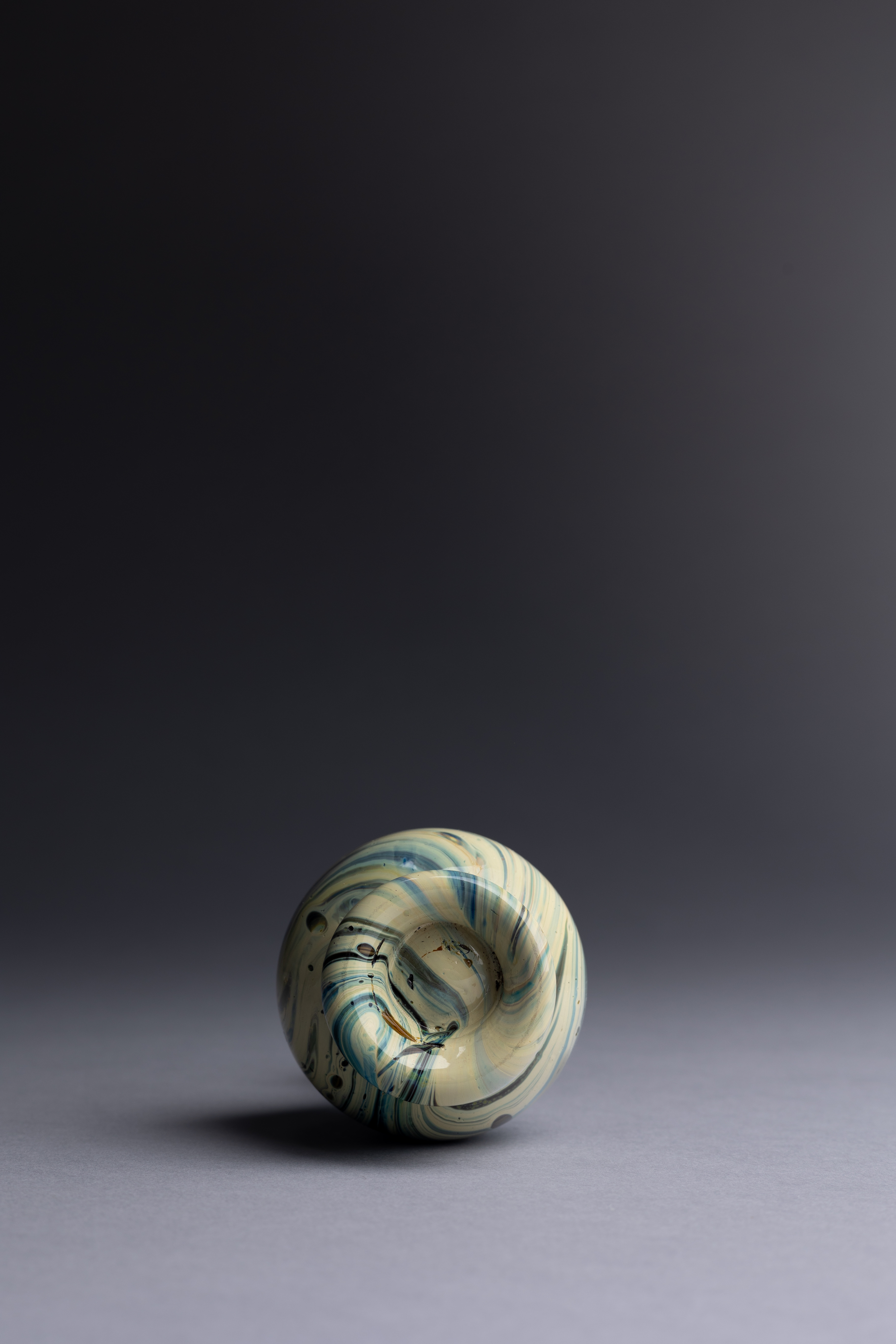During the late 19th century, the Italian Risorgimento consolidated the peninsula’s disparate city states and formed the country of Italy that we know today. In order to deploy a shared national history and a common language upon which a united nation could emerge, artists systematically looked back to the ages that created the Italian ethos and made it a great nation: Ancient Rome and Renaissance Italy. Antonio Salviati engaged in this shared Italian culture by bringing back to Venice the fine art of glassmaking. This Murano glass vase, made circa 1880, displays exceptional mastery of the 15th-century Venetian technique calcedonio to create an exquisite marbled surface akin to a polished gemstone.
During the late 19th century, the Italian Risorgimento consolidated the peninsula’s disparate city states and formed the country of Italy that we know today. In order to deploy a shared national history and a common language upon which a united nation could emerge, artists systematically looked back to the ages that created the Italian ethos and made it a great nation: Ancient Rome and Renaissance Italy. Antonio Salviati engaged in this shared Italian culture by bringing back to Venice the fine art of glassmaking. This Murano glass vase, made circa 1880, displays exceptional mastery of the 15th-century Venetian technique calcedonio to create an exquisite marbled surface akin to a polished gemstone.
“Next to a good display of china on the table or sideboard, there is nothing which lends greater grace to the appointments of a dining-room than delicate and well-designed glass.”
Charles Eastlake, Hints on Household Taste, 1868.
During the late 19th century, the Italian Risorgimento consolidated the peninsula’s disparate city states and formed the country of Italy that we know today. In order to deploy a shared national history and a common language upon which a united nation could emerge, artists systematically looked back to the ages that created the Italian ethos and made it a great nation: Ancient Rome and Renaissance Italy. Antonio Salviati engaged in this shared Italian culture by bringing back to Venice the fine art of glassmaking.
This Murano glass vase, made by Salviati & Co. circa 1880, displays exceptional mastery of the 15th-century Venetian technique calcedonio to create an exquisite marbled surface in imitation of polished chalcedony. The marbling effect of the blown glass was produced by adding swirls of metallic oxides, such as tin, iron, copper, and silver, to the molten glass. The oxides would dissolve in the extreme heat, leaving behind a mesmerizing pattern of yellows, greens, and browns. This technique had been lost in the years since the Renaissance, but through careful study and research Salviati and other Venetian glassmasters brought it back.
Salviati & Co. was largely responsible for restoring Murano’s status as the glassblowing center of Europe. Its wares were not only popular within Italy but were exported across Europe as consumers clamored for the factory’s gem-like glass objects. The factory gained particular global attention after its exhibit at the 1867 Paris World Fair. In England, Venetian glass held special appeal for Arts & Crafts households with critics like John Ruskin and Charles Eastlake favoring the delicate forms over “barbaric” and heavy British glass. Venetian glass’s impact on British consumers can be understood through Eastlake’s Hints on Household Taste (1868), in which he writes specifically about Salviati glass:
“It is not too much to say for this modest but interesting effort at reform in the manufacture of table glass, that it marks an important era in the history of industrial art. In no other direction that can be named neither in the design of cabinet work, ceramic productions, or jewellery, have we moderns realised so nearly the tastes and excellences of a by-gone age; and it will be a curious coincidence if, after years of humiliation and bondage, Venice should be enabled to revive one of the sources of her ancient wealth in the same epoch which has restored her to political and national freedom.”
-Charles Eastlake, Hints on Household Taste (1868), p.230.
Condition
Excellent.
For a detailed condition report, please contact us.
References
Literature
Aldo Bova, Rosella Junck, and Puccio Migliaccio, eds. The Colours of Murano in the XIX Century (Venice: Arsenale Editrice, 1999), p. 102 and 118-19 (model variants illustrated).
Carol M. Osborne, Venetian Glass of the 1890s: Salviati at Stanford University (Philip Wolfson Publishers, 2002), p. 72-77 (model variants illustrated).
“Next to a good display of china on the table or sideboard, there is nothing which lends greater grace to the appointments of a dining-room than delicate and well-designed glass.”
Charles Eastlake, Hints on Household Taste, 1868.
During the late 19th century, the Italian Risorgimento consolidated the peninsula’s disparate city states and formed the country of Italy that we know today. In order to deploy a shared national history and a common language upon which a united nation could emerge, artists systematically looked back to the ages that created the Italian ethos and made it a great nation: Ancient Rome and Renaissance Italy. Antonio Salviati engaged in this shared Italian culture by bringing back to Venice the fine art of glassmaking.
This Murano glass vase, made by Salviati & Co. circa 1880, displays exceptional mastery of the 15th-century Venetian technique calcedonio to create an exquisite marbled surface in imitation of polished chalcedony. The marbling effect of the blown glass was produced by adding swirls of metallic oxides, such as tin, iron, copper, and silver, to the molten glass. The oxides would dissolve in the extreme heat, leaving behind a mesmerizing pattern of yellows, greens, and browns. This technique had been lost in the years since the Renaissance, but through careful study and research Salviati and other Venetian glassmasters brought it back.
Salviati & Co. was largely responsible for restoring Murano’s status as the glassblowing center of Europe. Its wares were not only popular within Italy but were exported across Europe as consumers clamored for the factory’s gem-like glass objects. The factory gained particular global attention after its exhibit at the 1867 Paris World Fair. In England, Venetian glass held special appeal for Arts & Crafts households with critics like John Ruskin and Charles Eastlake favoring the delicate forms over “barbaric” and heavy British glass. Venetian glass’s impact on British consumers can be understood through Eastlake’s Hints on Household Taste (1868), in which he writes specifically about Salviati glass:
“It is not too much to say for this modest but interesting effort at reform in the manufacture of table glass, that it marks an important era in the history of industrial art. In no other direction that can be named neither in the design of cabinet work, ceramic productions, or jewellery, have we moderns realised so nearly the tastes and excellences of a by-gone age; and it will be a curious coincidence if, after years of humiliation and bondage, Venice should be enabled to revive one of the sources of her ancient wealth in the same epoch which has restored her to political and national freedom.”
-Charles Eastlake, Hints on Household Taste (1868), p.230.
Excellent.
For a detailed condition report, please contact us.
Aldo Bova, Rosella Junck, and Puccio Migliaccio, eds. The Colours of Murano in the XIX Century (Venice: Arsenale Editrice, 1999), p. 102 and 118-19 (model variants illustrated).
Carol M. Osborne, Venetian Glass of the 1890s: Salviati at Stanford University (Philip Wolfson Publishers, 2002), p. 72-77 (model variants illustrated).
This item ships free to the continental US, and globally for a flat-rate fee of $100.
All objects are packed with utmost care by our team of expert fine art shippers. All items are shipped with parcel insurance.
For more information on our shipping policies, please visit our FAQ Page.

